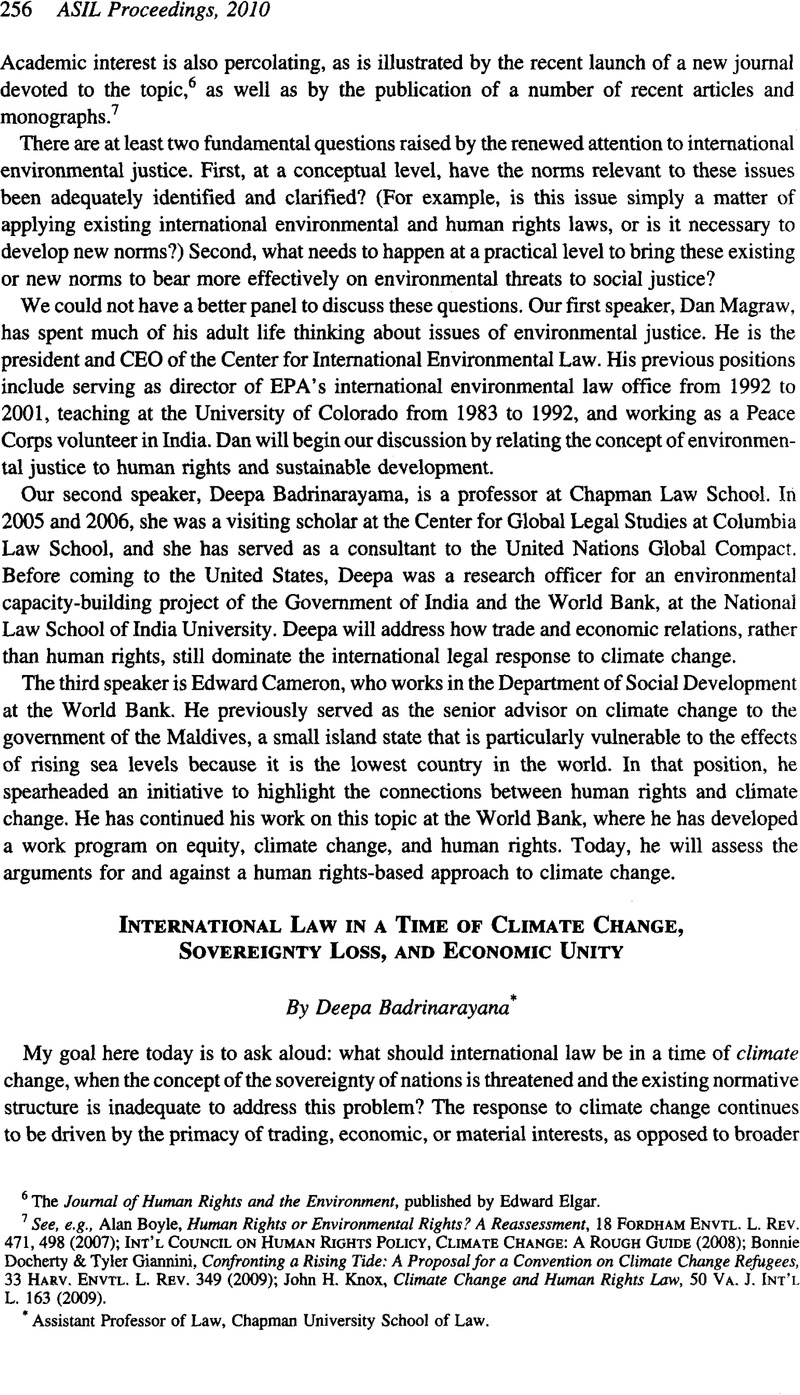Published online by Cambridge University Press: 28 February 2017

1 Krasner, Stephen D., Sovereignty: Organized Hypocrisy 8-9 (1999)Google Scholar.
2 Posner, Eric A. & Sunstein, Cass R., Climate Change Justice, 96 Geo. L.J. 1565, 1585 (2008)Google Scholar.
3 Osofsky, Hari M., The Inuit Petition as a Bridge ? Beyond Dialectics of Climate Change and Indigenous Peoples ‘ Rights, 31 Am. Indian L. Rev. 675 (2007)CrossRefGoogle Scholar.
4 These theories are presented in the following works: Guzman, Andrew T., A Compliance-Based Theory of International Law, 90 Cal. L. Rev. 1823, 1827 (2002)CrossRefGoogle Scholar; Jack L. Goldsmith & Ewe A. Posner, the Limits of International Law (2005); Anne-MARIE Slaughter, A New World Order (2004); José E. Alvarez, International Organizations As Lawmakers (2005).
5 549 U.S. 497 (2007).
6 See, e.g., Bernstein, William J., A Splendid Exchange 8–9 (2008)Google Scholar; Alvarez, José E., Contemporary Foreign Investment in Law: An “Empire of Law” or the “Law of Empire?,” 60 ALA. L. Rev. 943, 948 (2009)Google Scholar.
7 Anghie, Anthony, Imperialism, Sovereignty, and the Making of International Law 82 (2005)Google Scholar; Koskenniemi, Martti, The Gentle Civilizer of Nations 73 (2008)Google Scholar.
8 Niall Ferguson, Colossus: the Price of America’s Empire, 12 (2004).
9 Kyoto Protocol to the United Nations Framework Convention on Climate Change, adopted Dec. 11, 1997, 37 ILM 22 (entered into force Feb. 16, 2008).